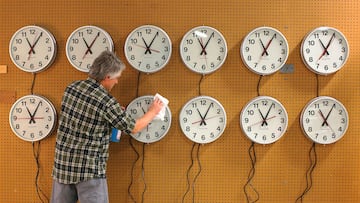Daylight saving time 2024: what is the reason for this change every year?
The practice of changing our clocks back can be traced to World War I. Why does the US continue Day Light Savings?


It’s that time of year again. Daylight Saving Time is coming up, which means you’ll lose an hour of sleep and will have to adjust to the time change. This concept is over 100 years old but is still in use in about 70 countries. This weekend, residents in most parts of the US will set their clocks forward an hour, a sign that spring is on the horizon.
Daylight saving: when did it all begin?
The idea of changing our clocks to take advantage of longer summer days was first suggested by Benjamin Franklin while he was living in Paris. However, the person who first came up with the idea was a British builder named William Willett, who proposed the concept to Parliament as a way to help the entire nation better utilize daylight.
However, Germany was the first nation to implement the practice as it was desperate to save energy during the First World War. This policy quickly caught on with most European countries, the United States, and the United Kingdom, along with their allies, adopting Daylight Saving Time by 1918. Many nations got rid of the system in the years after the war, only to adopt it again when there was a need to conserve energy. In 1966, Daylight Savings Time was imposed across the country to take advantage of longer days in the summer months.
Does Daylight Saving Time really conserve energy?
Related stories
The Daylight saving time is credited with reducing crime, people are doing activities in the daylight so there are less opportunities for criminals, as well as saving lives and preventing traffic accidents. However, the primary reason for the twice-yearly shift comes from the energy savings it is purported to have. According to the US Department of Transportation study in 1975, the US experienced nearly a one percent daily savings on energy use during the yearly Daylight Savings Time period.
However, those findings have been contradicted by more recent analysis performed in 2006 when Indiana implemented Daylight Saving Time statewide. Researchers found that residential energy consumption actually increased by around one percent. They ventured that although less lighting is needed, the longer summer evenings caused a spike in AC usage in households throughout the state.

